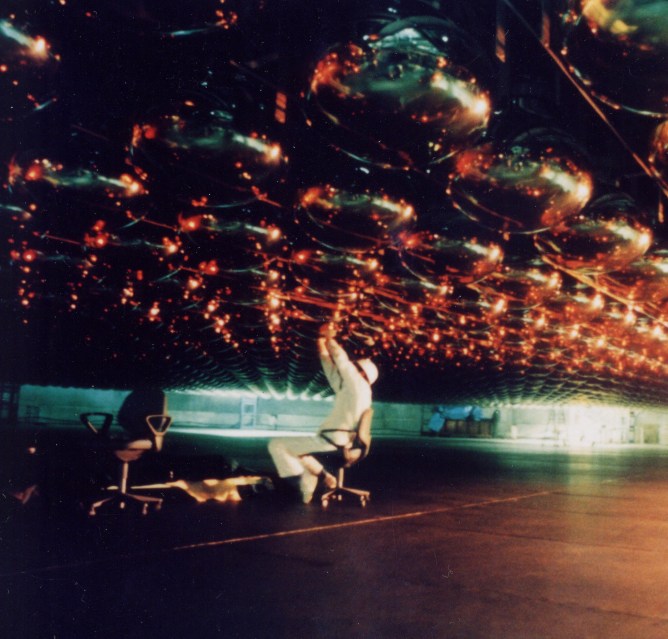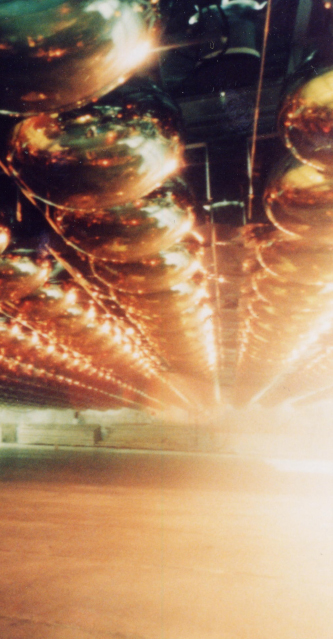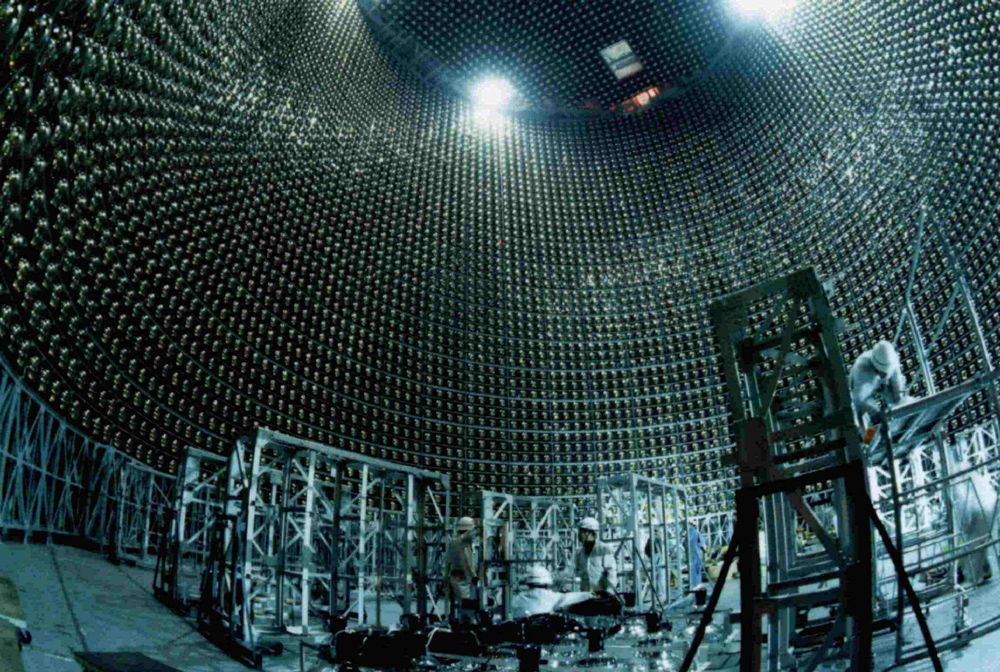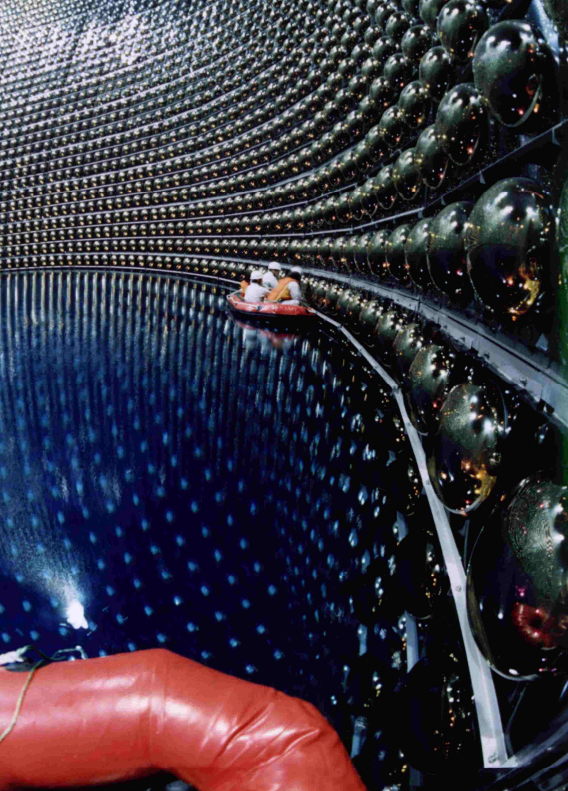-
Let There Be Light
Super-Kamiokande Neutrino Detector
Deep underneath Japan’s Mount Kamioka in a cavern big enough to contain your standard Gothic cathedral, a 41-metre-high, stainless steel cylinder houses one of modern science’s own cathedrals of sorts. The huge Super-Kamiokande Neutrino Detector was built for the sole purpose of understanding one of the most elusive subatomic particles, the neutrino (best known in lay circles for being accused, but later acquitted in 2011, of breaking Einstein’s universal speed limit). Like the superstructures of the Middle Ages, the walls – equipped with the high tech of our own times – were designed to help us understand the world, but unlike their forebears, not through windows illuminated from without, but by a flash of light caused by the rarest of all events: the interaction of a neutrino with another particle within.
-
Neutrinos are highly unreactive. Everything in the detector is set up to heighten the statistical chance of a fortuitous collision. The location is so far underground that it not only protects the site from all visual light, but also from cosmic rays, ensuring that only neutrinos are the cause of any measured events.
The gigantic cylindrical tank is filled with 50,000 tonnes of super-pure water and every single one of those water nuclei has one precise purpose: to wait for one of the billions upon billions of neutrinos, that rush through every cubic metre of the experiment each second, to hit it. If and when this happens (and it has only happened a handful of times since the experiment started in 1996) an array of over 10,000 light-sensitive detectors carpeting the walls, ceiling and floor are waiting to record the instance of a tiny flash of light – so-called Cherenkov radiation – which results from such a collision.
Physicists hope to use the resulting data to gain insight into that particle’s origin, which could lie within a supernova many light years away, making this darkest of places on earth, this “cathedral of science”, part of our endeavour to help divine the story of the heavens. p (Sebastian Schumacher)

-



The vast interior chamber of the Super-Kamiokande is covered by over 10,000 light sensitive detectors. (All photos courtesy Kamioka Observatory, ICRR (Institute for Cosmic Ray Research), The University of Tokyo)
-
Search
-
FIND PRODUCTS
PRODUCT GROUP
- Building Materials
- Building Panels
- Building technology
- Façade
- Fittings
- Heating, Cooling, Ventilation
- Interior
- Roof
- Sanitary facilities
MANUFACTURER
- 3A Composites
- Alape
- Armstrong
- Caparol
- Eternit
- FSB
- Gira
- Hagemeister
- JUNG
- Kaldewei
- Lamberts
- Leicht
- Solarlux
- Steininger Designers
- Stiebel Eltron
- Velux
- Warema
- Wilkhahn
-
Follow Us
Tumblr
New and existing Tumblr users can connect with uncube and share our visual diary.
»Don‘t fight forces, use them.«
Richard Buckminster Fuller
Keyboard Shortcuts
- Supermenu
- Skip Articles
- Turn Pages
- Contents


